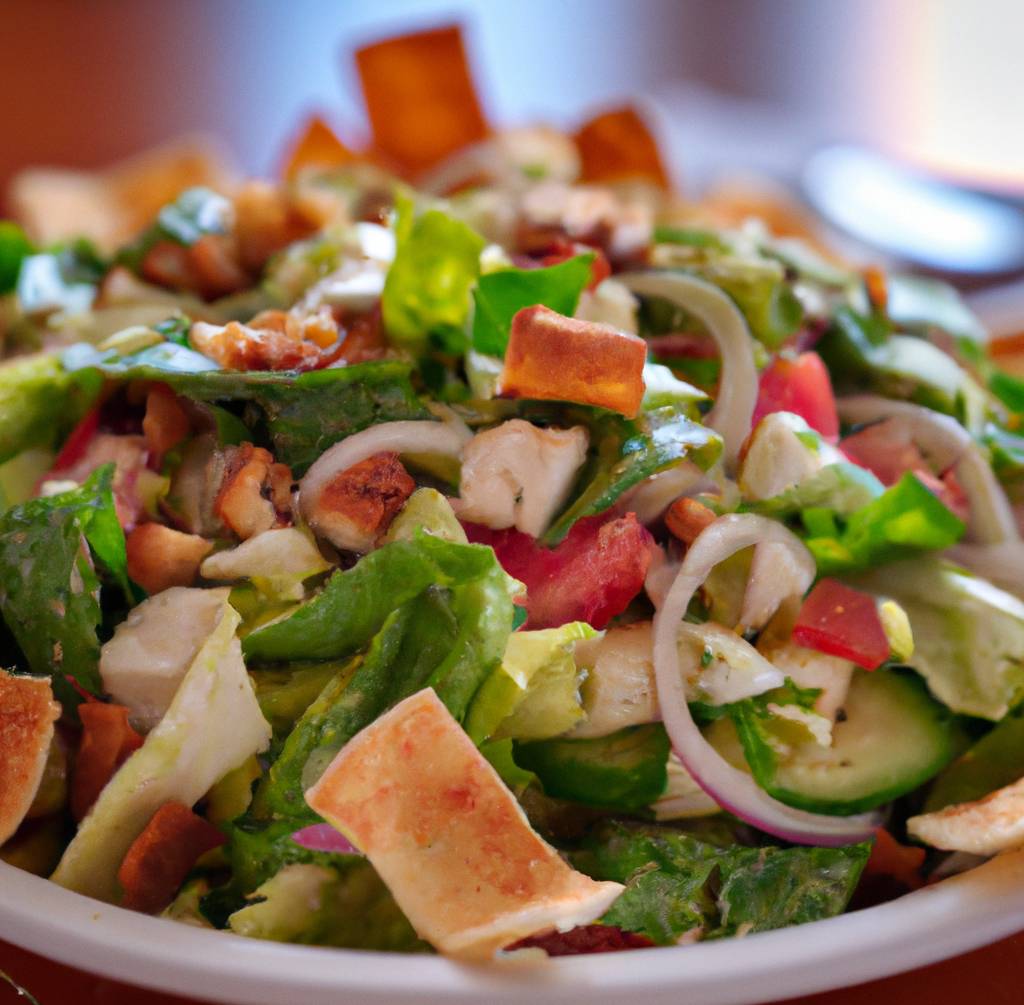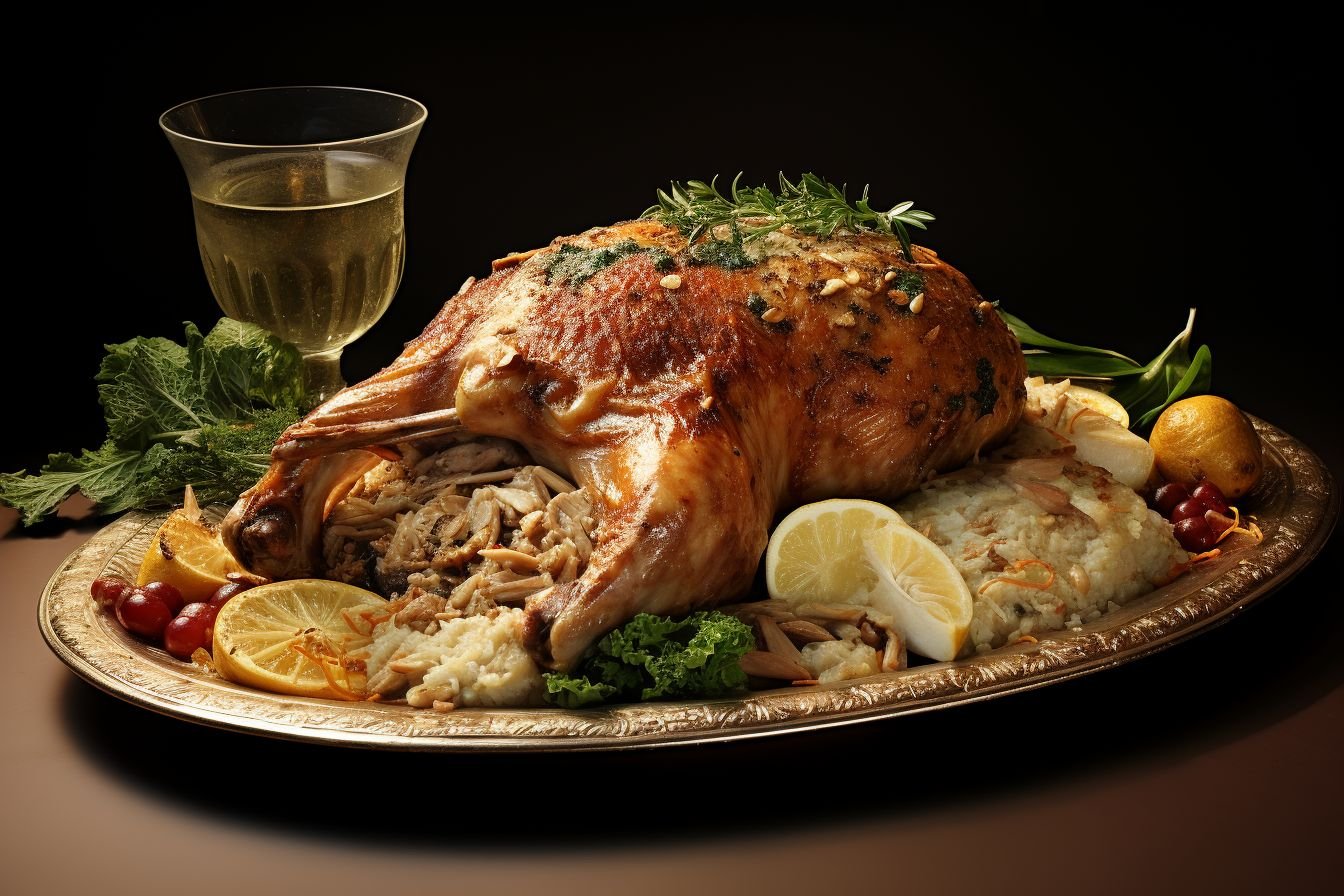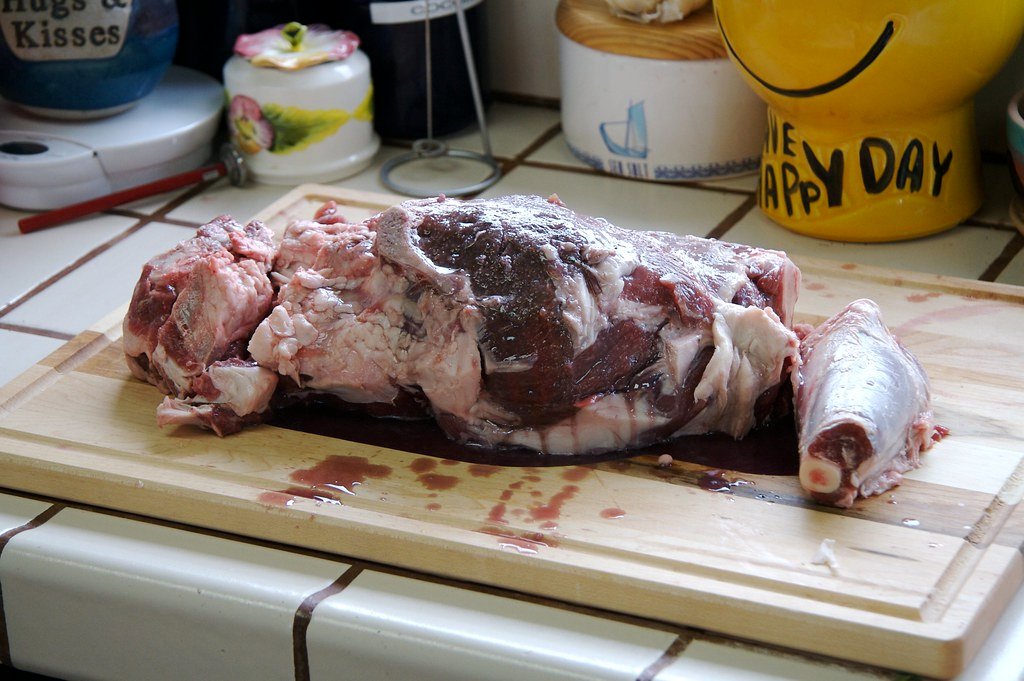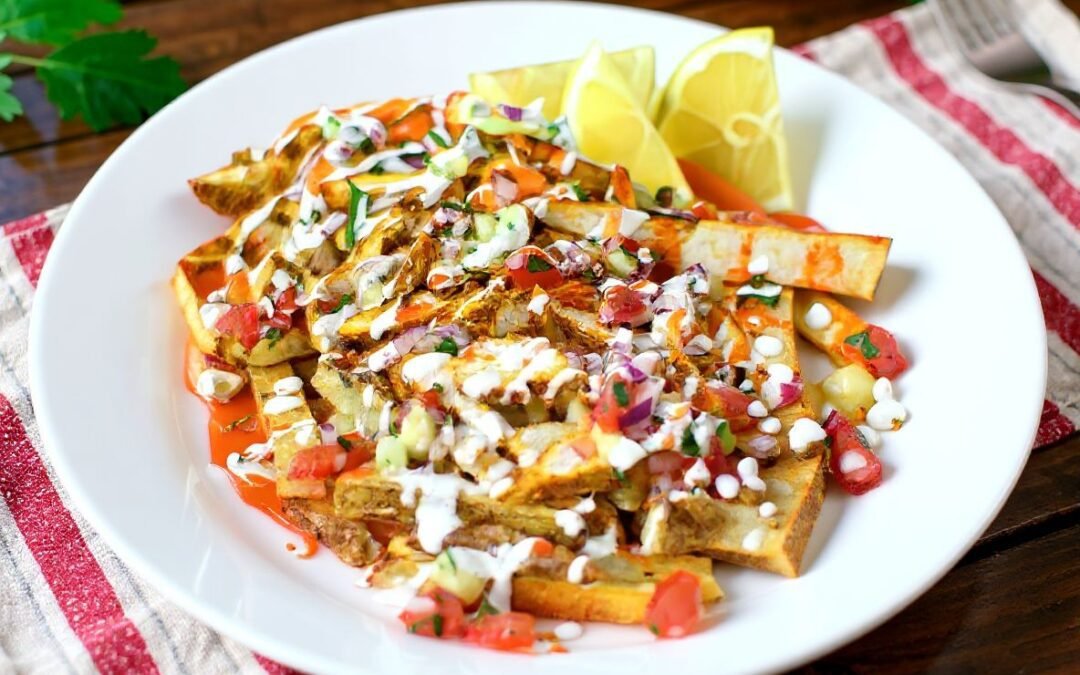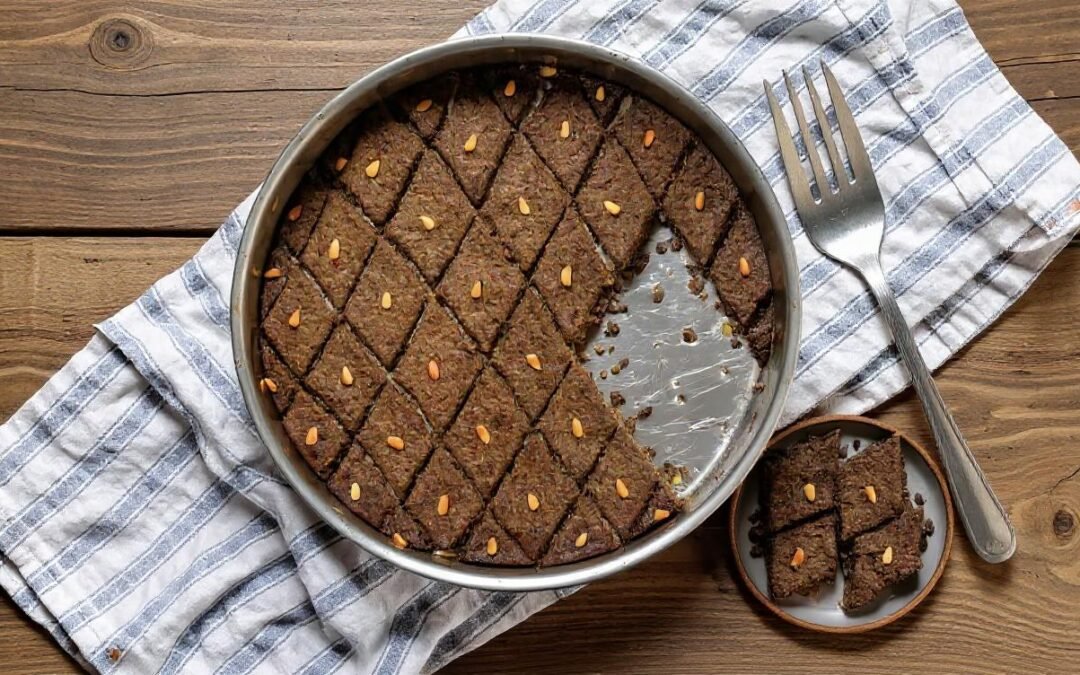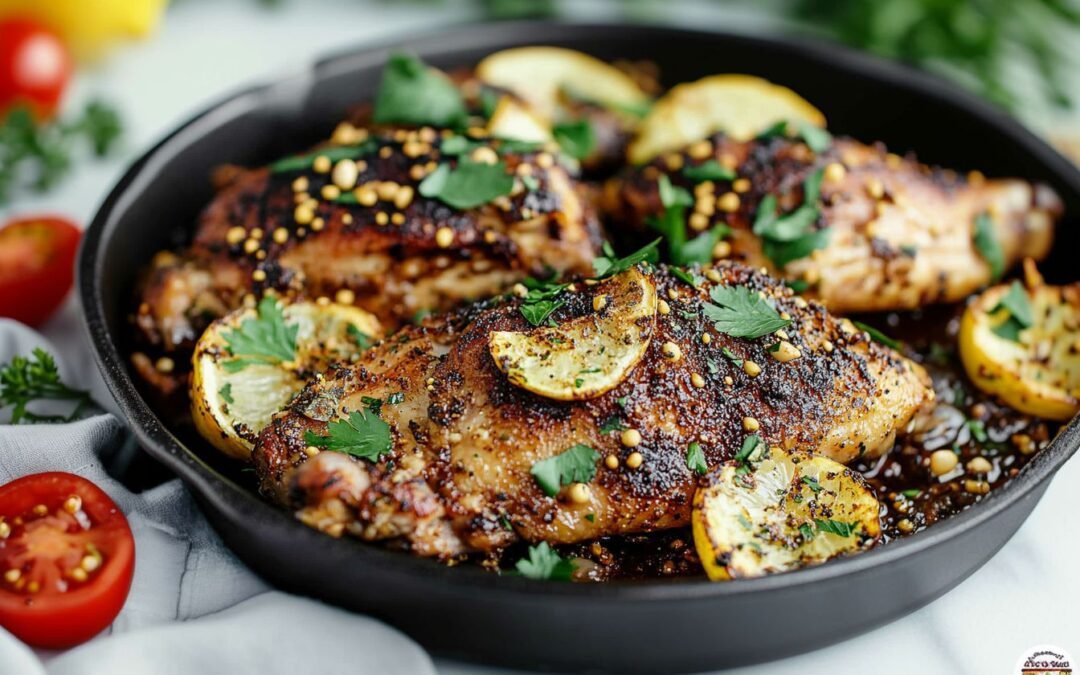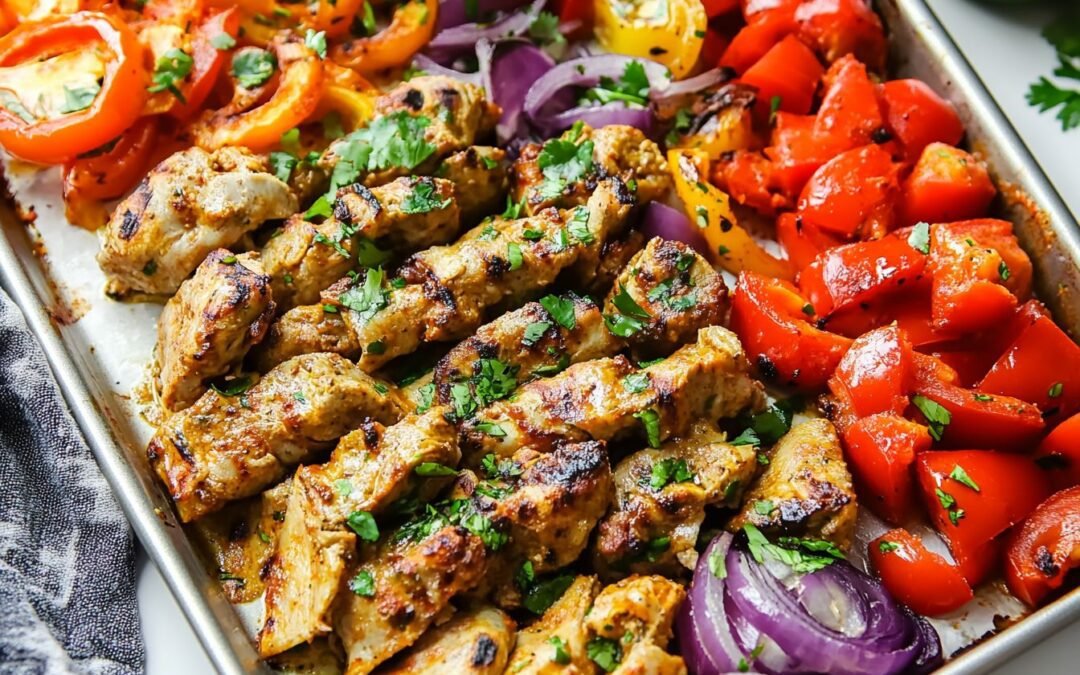Growing up in a Middle Eastern household, I was fortunate enough to experience a variety of delicious dishes that are rich in flavor and history. One dish that always stood out to me was kharoof mahshi, which translates to “stuffed lamb” in English. This traditional dish is a staple in many Middle Eastern countries and is often served on special occasions such as weddings and religious holidays.
To make kharoof mahshi, you’ll need a few key ingredients. The rice mixture is made up of basmati rice, corn oil, onions, green peppers, garlic, ginger, carrots, and a blend of spices including cumin, turmeric, and cardamom. The lamb is seasoned with saffron, coriander, cumin, paprika, cinnamon, and olive oil, and is stuffed with sliced carrots and oranges. The result is a mouth-watering dish that is sure to impress your guests.
Kharoof mahshi is more than just a meal – it’s a symbol of hospitality and generosity. In many Middle Eastern cultures, serving this dish to guests is a sign of respect and appreciation. Whether you’re looking to try something new or want to impress your friends and family, kharoof mahshi is a dish that will leave a lasting impression.
What Is Kharoof Mahshi
Definition
Kharoof Mahshi is a traditional Middle Eastern dish that is made by stuffing a whole lamb with rice, herbs, and spices, and then roasting it over an open fire. The lamb is usually marinated in a mixture of olive oil, garlic, and various spices before being stuffed and roasted. The dish is typically served at special occasions such as weddings, Eid al-Fitr, and other celebrations.
Cultural Significance
Kharoof mahshi is an important dish in Middle Eastern culture and is often served as a symbol of hospitality and generosity. It is a dish that requires a lot of time and effort to prepare and is usually reserved for special occasions when friends and family gather together to share a meal. In many Middle Eastern countries, it is customary to invite guests to share in the preparation and cooking of the lamb, which is seen as a way of strengthening social bonds and building community.
The dish is also significant because it reflects the region’s long history of nomadic herding, which has been a key part of the Middle Eastern way of life for thousands of years.
In conclusion, it is a delicious and culturally significant dish that has been enjoyed by Middle Eastern people for generations. Its unique flavor and preparation method makes it a perfect centerpiece for any special occasion, and its cultural significance makes it a dish that is truly worth celebrating.
Ingredients:
Rice Mixture
- 12 cups of high-quality basmati rice
- 2 cups of corn oil
- 20 coarsely chopped large onions
- 5 chopped green peppers
- 20 mashed cloves of garlic
- 1/2 cup of grated ginger
- 20 large carrots, sliced
- 1/4 cup of mixed spices
-
1/4 cup of cumin
-
1/4 cup of turmeric
-
1/4 cup of ground cardamom
-
1/4 cup of salt
Lamb Seasoning
- 10 kilos (22 lbs) of whole lamb
- 2 tablespoons of saffron
- 1/2 cup of coriander
- 1/4 cup of cumin
- 1/4 cup of turmeric
- 1/4 cup of ground cardamom
- 1/4 cup of paprika
- 1/4 cup of cinnamon
- 1/4 cup of salt
- 2 tablespoons of black pepper
- 1/2 cup of olive oil
- 20 sliced large carrots
- 20 quartered large oranges
How to Make Kharoof Mahshi?
- Start by washing the rice several times and soaking it in salted water for 30 minutes.
- Get a big, sturdy saucepan. Put some oil in it and heat it over medium. Toss in onions, garlic, peppers, and ginger. Stir with a wooden spoon until the onions get soft.
- After that, toss in the carrots, and spices like cumin, cardamom, turmeric, plus salt and pepper. Mix it all and pour 1 1/2 cups of water for each cup of rice. Cover the pot and let it come to a boil.
- When the water reaches a boil, drain the rice and place it into the saucepan. Let it boil and soak up most of the water. Cover the rice and simmer it for 30 minutes.
Making the lamb seasoning:
- In a deep dish, combine saffron, cumin, coriander, cardamom, turmeric, paprika, cinnamon, salt, pepper, and olive oil. Mix thoroughly.
- Next, cover a large oven tray with several sheets of aluminum foil that are large enough for the size of the lamb. Place the lamb on the aluminum foil.
- Spread half of the spices onto the lamb and rub them in thoroughly. Then, apply the remaining spices inside the lamb and rub firmly to cover the entire surface.
- Then, stuff the lamb with the carrots and oranges.
- Set the oven to 350 °F and position the lamb in the center of the oven.
- Allow it to simmer for 2-3 hours until thoroughly cooked.
- Finally, transfer the cooked rice onto a large serving dish. Lay the roasted lamb on top of the rice and sprinkle fried nuts for garnish.
Serving Suggestions
As a traditional Middle Eastern dish, it is often served with various accompaniments and presented in unique ways. Here are some serving suggestions that can enhance the flavor and presentation of this delicious dish.
Traditional Accompaniments
Kharoof mahshi is typically served with a variety of traditional Middle Eastern sides. One popular side is hummus, a creamy dip made from chickpeas, tahini, and lemon juice. Another common side is baba ghanoush, a smoky eggplant dip that pairs well with the lamb flavor. Tabbouleh, a salad made from parsley, tomatoes, onions, and bulgur wheat, is also a great accompaniment to this dish.
Presentation Tips
The stuffed lamb is traditionally served on a large platter, garnished with fresh herbs. To enhance the presentation of the dish, consider adding some colorful vegetables like roasted red peppers or cherry tomatoes. You can also sprinkle some pomegranate seeds on top for a pop of color and added sweetness.
Another way to present Kharoof Mahshi is by stuffing the lamb with rice, pine nuts, and raisins before roasting it. This creates a beautiful and flavorful centerpiece that is sure to impress your guests.
In conclusion, this is a delicious and versatile dish that can be served with a variety of traditional Middle Eastern sides and presented in unique ways. With these serving suggestions, you can elevate the flavor and presentation of this classic dish and impress your guests at your next gathering.
Regional Variations
Middle Eastern Differences
As it is a traditional dish that has been enjoyed for centuries across the Middle East, it is no surprise that there are regional variations to the recipe. In some areas, the dish is made with rice instead of bulgur wheat, while in others, the stuffing may include different spices or herbs.
One of the most notable differences is the type of meat used. While lamb is the most common meat used, in some regions, beef or even goat may be used instead. Additionally, the cooking method may vary, with some regions preferring to roast the stuffed lamb in an oven, while others may cook it over an open flame.
Adaptations Worldwide
As this dish has gained popularity outside of the Middle East, it has been adapted to suit local tastes and ingredients. In some parts of Europe, for example, the dish may be made with pork instead of lamb, while in North America, ground beef may be used in place of the traditional lamb shoulder.
Vegetarian versions have also been developed, with fillings made from ingredients such as rice, lentils, and vegetables. These adaptations allow people with dietary restrictions to enjoy the flavors of this classic dish.
Tips and Tricks
Choosing the Right Lamb
Choosing the right lamb is crucial. Look for a young lamb with tender meat and a mild flavor. The best cuts of lamb for this dish are the shoulder and the leg. Make sure to ask your butcher to debone the lamb for you, as this can be a time-consuming and tricky process.
Preparation Shortcuts
Preparing this dish can be a labor-intensive process, but there are a few shortcuts you can take to make it easier. One option is to use pre-cooked rice instead of raw rice. This will cut down on the cooking time and ensure that the rice is fully cooked and tender.
Flavor Enhancements
While this is delicious on its own, there are a few flavor enhancements you can add to make it even more tasty. One option is to add chopped nuts, such as almonds or pistachios, to the rice stuffing. This will add a crunchy texture and a nutty flavor to the dish. Another option is to add dried fruits, such as raisins or apricots, to the rice stuffing. This will add a sweet and tangy flavor to the dish. Finally, consider adding fresh herbs, such as parsley or mint, to the rice stuffing or garnishing the finished dish with chopped herbs. This will add a fresh and fragrant flavor to the dish.
Common Mistakes to Avoid
- Overstuffing the lamb: It can be tempting to pack as much filling as possible into the lamb, but this can lead to uneven cooking and a soggy filling. It’s better to leave some space inside the lamb and pack the filling in tightly but not excessively.
- Not seasoning the filling enough: The filling is what gives the lamb its flavor, so it’s important to season it well. Don’t be afraid to add more salt, pepper, or spices to the filling until it tastes just right.
- Overcooking the lamb: Kharoof mahshi is best when the lamb is cooked to medium-rare or medium. Overcooking can result in tough, dry meat.
Conclusion
In my opinion, kharoof mahshi is a delicious and unique dish that is worth trying. The combination of tender lamb meat, flavorful rice, and aromatic spices creates a mouth-watering experience that is sure to satisfy your taste buds.
One thing to note is that kharoof mahshi can be time-consuming to prepare, but the result is worth the effort. It’s a great dish to serve on a special occasion or when you want to impress your guests with something different.
If you’re looking to try something new and exciting, I highly recommend giving kharoof mahshi a try. It’s a dish that will leave a lasting impression on your taste buds and have you returning for more.
Did you know? Fresh salad pair perfectly with this dish
Get this fattoush salad recipe now (by clicking the image below):
